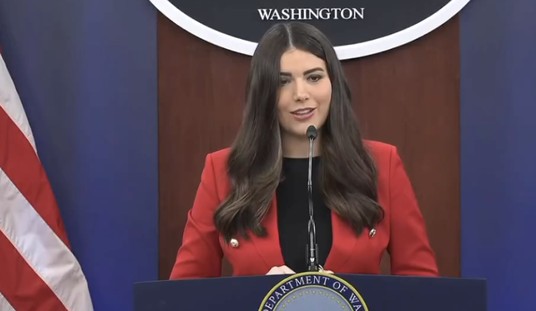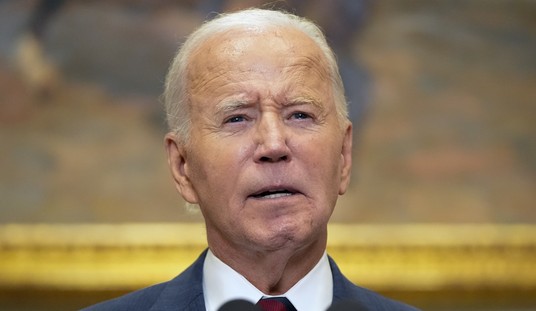In 1867, US Secretary of State William Seward negotiated the purchase of what is now the State of Alaska from the Russian Empire for the bargain basement price of $7.2 million, which translated into present-day dollars equates to approximately $160 million. It was a veritable steal, considering the enormous mineral wealth, particularly in the form of gold, and later oil, that would eventually accrue to the United States.
Alaska, of course, has tremendous natural beauty as well, and is vital to the defense of the United States, representing a bulwark against threats from present-day Russia, as well as North Korea and China. It houses nine crucial military installations, including, among others, Fort Wainwright in Fairbanks, Eielson Air Force Base in North Pole, and Elmendorf Air Force Base in Anchorage. These facilities are a central pillar in our northern and western defenses.
Tsar Alexander II of Russia, having suffered a catastrophic defeat in the Crimean War and being low on cash, was looking to raise money where he could, and his largely unused Alaskan colony was an asset he saw as disposable. Secretary Seward had prescience like few politicians before or since, when he undertook to purchase the territory. He suffered the slings and arrows of mockery from his political opponents and the media, who dubbed the proposed purchase “Seward’s Folly.” The media were as benighted and snarky then as they are today. Boy, did Seward have the last laugh, although unfortunately his vindication would come long after his passing from this earth.
Today, Donald Trump is trying to replicate Seward’s feat with an acquisition of Greenland. The similarities between the two land masses and the extant geopolitical and economic conditions are remarkable.
Alaska is an arctic and subarctic land mass of approximately 587,000 square miles, that is largely uninhabitable, or at least inhospitable through most of the year. Greenland is similarly arctic and subarctic, and comprises roughly 836,000 square miles. It too is largely inhospitable to human habitation, due to the severe cold.
Recommended
Alaska at the time of the US acquisition had about 60,000 inhabitants. Greenland has approximately 55,000 inhabitants, mostly concentrated in the capital city of Nuuk. Greenland is one of the three constituent parts, and by far the largest, of the Kingdom of Denmark. Greenland relies for half of its public revenue on metropolitan Denmark. In other words, it’s presently a money-loser and drag on mother Denmark.
Like Alaska, and as has been stated by President Trump and Vice President Vance on numerous occasions, Greenland represents a vital asset to Western – not just US – security. Its location is key to the development by the Western powers of mineral wealth extraction in the Arctic, as we increasingly compete with China and Russia to tap those resources. Additionally, it possesses rare earth elements itself that are becoming increasingly important to new technologies. A study by the European Commission found that, in addition to oil, Greenland possesses 25 of 34 minerals deemed “critical raw materials.” However, because Denmark and its territories are burdened by suffocating European Union environmental regulations, that vast wealth goes largely untapped. Those projects that are underway to mine some of the rare earths in Greenland are bogged down in legal disputes and red tape. Welcome to Europe.
Tremendous additional wealth lays buried under Greenland’s soil in the form of nickel, gold, copper, diamonds, tungsten, and uranium – all waiting to be tapped by capable, resourceful American ingenuity.
The United States already has some defense presence in Greenland in the form of Pituffik Space Base, formerly Thule Air Base, which operates under the NATO framework. It was established in 1951 as part of a US-Danish defense agreement. It is the northernmost outpost of the US armed forces, and contains vital missile defense sensor capabilities, housing space surveillance and control technologies. These capabilities of course are of increasing importance as Russia, and more importantly China, increase their space-based offensive potential.
Both Greenland and the United States would benefit tremendously, as would Denmark, were that country to sell Greenland to the United States, allowing Greenland to become a US territory, and perhaps eventually a US state.
I would propose offering every Greenland citizen – man, woman and child – one million dollars to agree in a plebiscite or referendum to accession of the island by the United States. Additionally, the Kingdom of Denmark might be offered an amount equivalent to two times that proffered collectively to the Greenlanders. So payment to 55,000 Greenlanders would mean an outlay of $55 billion. The additional $110 billion to Denmark would mean a total outlay of $165 billion.
Surely, this sum would be eventually returned manifold in the form of mineral extraction by private companies, and resulting taxes to US Government coffers, in addition to enhanced Western defensive capabilities on the island of Greenland. A more efficient and laxer regulatory framework via a pro-free market US regime would benefit all concerned.
The payment to Denmark would represent over one-fourth of its annual $500 billion GDP.
Where would the US derive these funds, without adding still more to its monstrous national debt? Tariffs come to mind. Additionally, Elon Musk and his DOGE team hope to realize savings of $1 trillion per year by radically reducing our insanely bloated federal workforce and absurdly stupid and wasteful expenditures on things like transgender surgeries for mice, condoms for Gazans and the just-announced “savings of $3.3B[illion], including a $145K USDA consulting contract for ‘Peru climate change activities,’” per the DOGE website, which I encourage everyone to check out. It helpfully lists all the amazing (in a bad way) contracts they are identifying for elimination.
I would further suggest to President Trump and Vice President Vance, rather than chiding Denmark for its handling of Greenland to date, that it offer Greenlanders and Danes both the carrot of wealth and the prospects of development of Greenland under US auspices, along with the enhancement of the West’s security posture.
William F. Marshall has been an intelligence analyst and investigator in the government, private, and non-profit sectors for 38 years. He is a senior investigator for Judicial Watch, Inc., and has been a contributor to Townhall, American Thinker, Epoch Times, The Federalist, American Greatness, and other publications. His work has been featured on CBS News 48 Hours and NBC News Dateline. (The views expressed are the author’s alone, and not necessarily those of Judicial Watch.)
























Join the conversation as a VIP Member